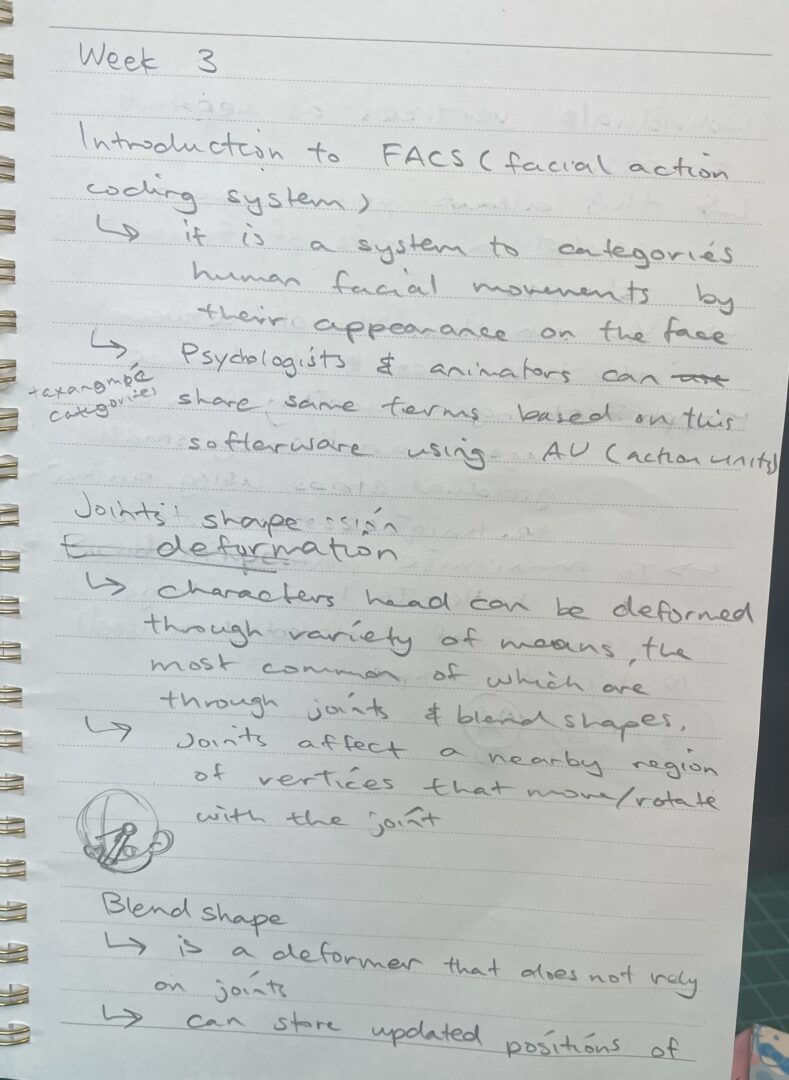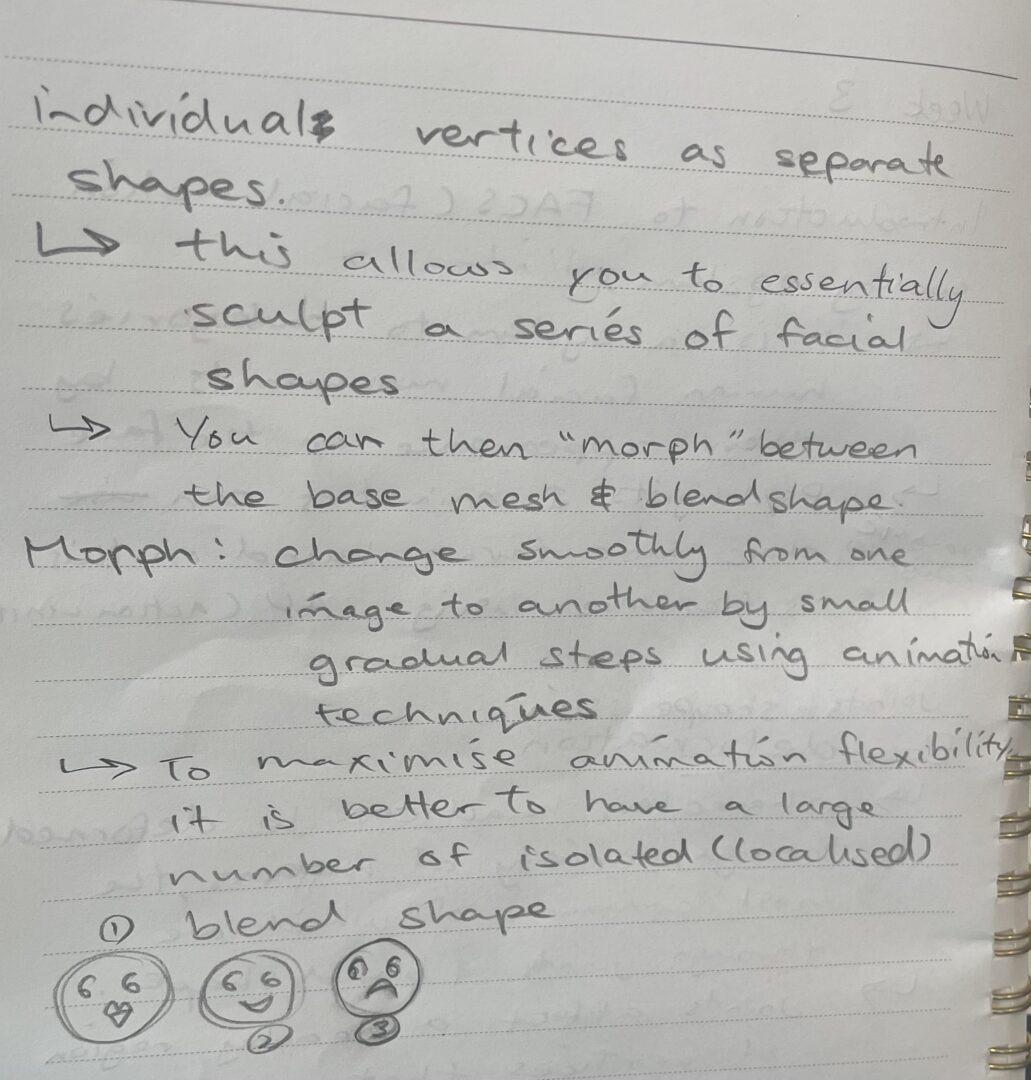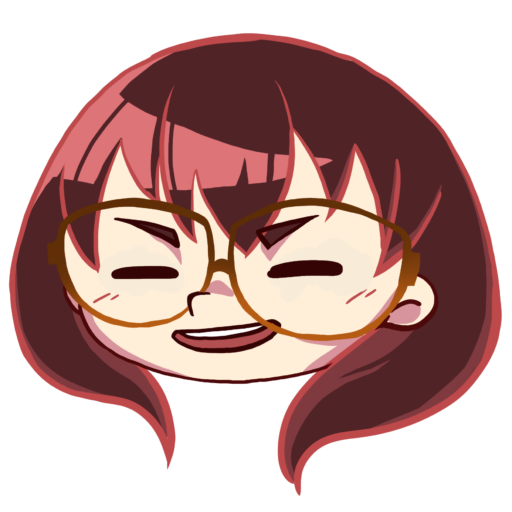The lecture posted mainly focused on the introduction of FACS (Facial action coding system), and the difference between Joint shape deformation and Blend shapes.
My written notes:


The main Takeaway from this lecture was:
- FACS (Facial action coing system) is a system to categories human facial movements by their appearance on the face
- Terminology/Taxanomy used for this (AU – Action units) is shared between psycholigist and animators, therefore, people from both industry can share informations and talk on the same table.
- Joint shape deformation is where joints affect a nearby region of vertices that move/rotate with the joint.
- Blendshape is a deformer that does not rely on joints. It can store updated positions of individual vertices as separate shapes (save data). Therefore you can ‘Morph’ (change smoothly from one image to another by small gradual steps using animation techiniques.

Link to more resource about AU (Action Units)
https://imotions.com/blog/learning/research-fundamentals/facial-action-coding-system/
I then moved onto Analyzer to retarget the dots to the markers on the mouth. After retargeting on the kept frames, I realised that many dots on the edge of the upper lip (openening of the mouth) are out of position when it closes and opens up. Therefore I went back to adjust those markers, working back and forward. At the end, I had a total of 28 frames.

In class, Dr Kennedy introduced FACS and AU to the class. Then moved onto talking about Paul Ekman, who is a well known psycologists for his understanding of emotions and heir relation to facial expression.
H also gave an anouncemnt to the class to adjust the placement of the markers on the eyes. Instead of tracking the markers on the eye leds, place the dot onto the root of an eyelash, so I went back to change the right eye for it. Howver, for the left eye, I realised that the are many frames where the eye lashes disappear due to the motion blur. I asked Dr Kenndy about his problm and he told me to have other factors in the surroundings as a reference (the positioning of the dot according to the location of the marker in the neutral frame). So if the lash I am tracking was directly on th top of the marker, position the dot just above the marker on where the las is absent due to the blur.
